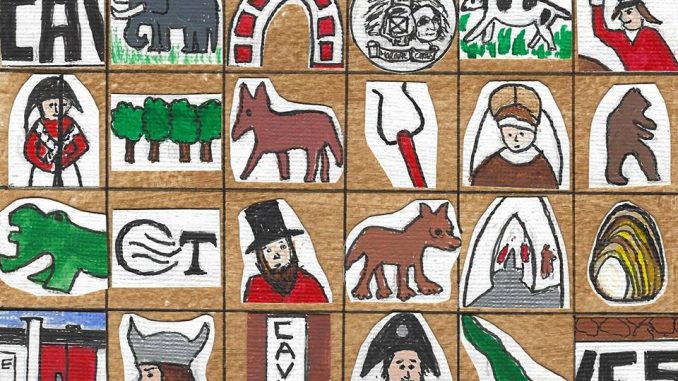
A preview of around 150 art postcards that will be sold in a fundraising auction opens on Saturday (September 9).
Between September 9-16 the postcards will be on display at the Harbour Arm Gallery in Margate. The auction will take place on the final day at 2pm with Canterbury Auction Rooms heading the sale.
The art works are to be sold off to raise funds for the Margate Caves project, which is working to reopen the historic site in Northdown Road and create additional community facilities by 2019.
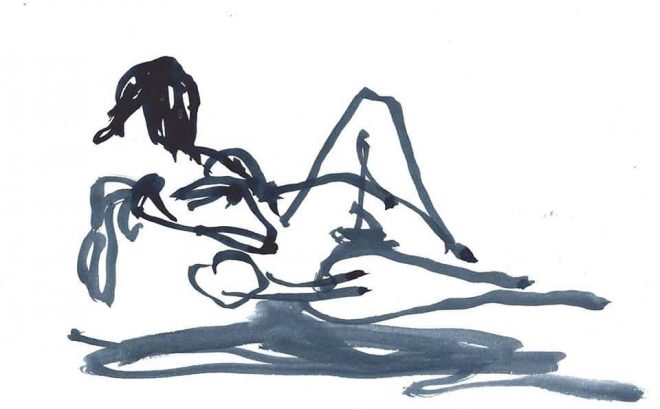
Some 80 artists have donated, including Tracey Emin, comedian Mark Thomas, author and performer Stella Duffy, potter and TV presenter Keith Brymer Jones as well as well-known locals such as – Twinkle Troughton, Dawn Cole, Paul Hazelton and Tracey Thompson.
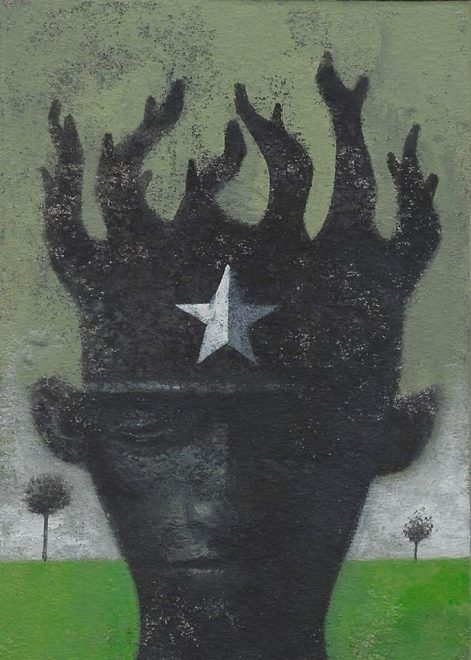
Tracey Emin, who exhibits her iconic and controversial installation My Bed at Turner Contemporary in October, has donated four works.
Paul Hazelton has exhibited across the world, and had a recent work in a charity auction sell for £5000. His work is included in the late Robin Williams family collection;
Dawn Cole is currently Artist in Residence at Canterbury Cathedral and her work is in the V&A permanent print collection;
There is also a work by actor Montserrat Lombard, best known from Ashes To Ashes and the St Trinian’s remake.
Images range from pencil figures and letterpress prints to a photo collage of Margate’s Maurice Morris.

The creator of each piece is a secret, meaning you will have to buy a postcard before the artist is revealed by the signature on the back.
Events through the week at the gallery include a postcard-making workshop this Sunday (September 10) from noon to 4pm and a talk about the caves by Trustee Dan Thompson next Wednesday (September 13) at 6pm.
During Dan’s talk there will be details of previously unrevealed history, including details about the age of the house that was on the caves site and its use as a schoolhouse teaching girls science.
A milestone announcement is also promised.
The campaign
Following a six-year campaign, The Margate Caves Community Education Trust secured £1.5million of funding to create a landmark building that includes community facilities such as a cafe, alongside a visitor centre that will provide access to the restored Caves, which were closed in 2004.
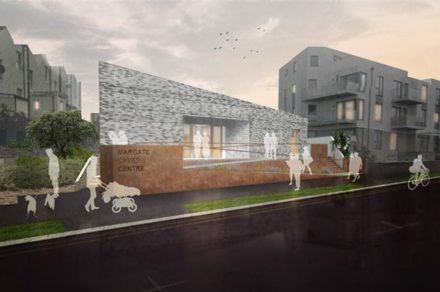
It will sit in Northdown Road on the footprint of the old Bryan House/Northumberland House, which was destroyed during the Second World War.
Designed by award-winning architects Kaner Olette, the building received planning permission in 2015.
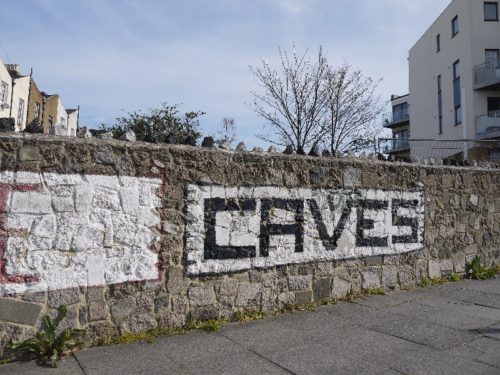
The annual postcard auction has previously raised cash for organisations such as Oasis Domestic abuse and artists have included Grayson Perry, Paul Hazelton, Quentin Blake, Zandra Rhodes Vic Reeves, Dawn Cole and Kate Harrison.
Commission bids can be placed for those who can’t attend the gallery. A complete catalogue of works will be available online later this week. It will also be for sale across Margate.
A history of the Margate Caves
The Margate Caves site is thought to have originally been excavated as a chalk mine in the late 17th/early 18th century. Chalk was used in the production of quicklime and in brickmaking, where it contributed to the distinctive yellow tone of local older bricks. At some point the site was abandoned.
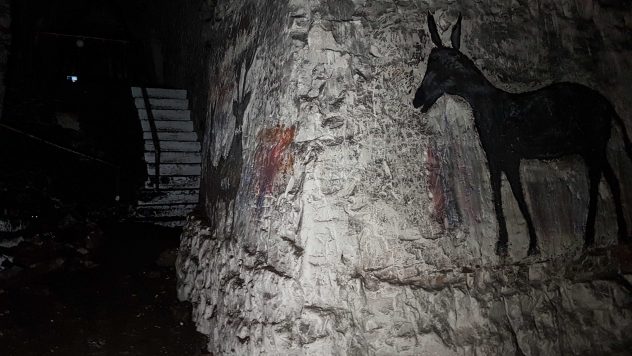
In the late 18th century, a man called Francis Forster bought the site and built Northumberland House. Local stories say that in the last years of the century, his gardener fell down a hole, rediscovering the Caves. Forster commissioned a local artist to paint some images on the walls, such as George III, various animals and a hunting scene. He also dug certain pits and used the Caves as a grotto, ice well and wine store. When Forster died in 1835, the Caves were sealed up once again.
In 1863, an enterprising local man opened them briefly and marketed them to the recent tourists as “Vortigern’s Cavern”. Vortigern was a local king who reportedly invited the Jutes, Hengist and Horsa to invade Thanet. While Hengist may have done quite well, Vortigern’s Caves weren’t successful and they were closed.
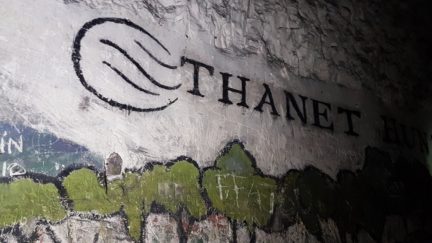
By the latter years of the 19th century, Northumberland House had become the vicarage for Holy Trinity Church. The vicar opened the Caves briefly in 1910, but they were closed at the onset of the First World War. In 1914 a sloping passage was cut from the cellars of the Vicarage so that the residents could use them as an air raid shelter.
After the war the Caves were once again reopened to the public, before being closed again in 1938, with the area scheduled under a scheme called ‘The Zion Place Re-development Plan’.
Once again the Caves provided refuge during World War Two and in June 1941 both Northumberland House and a large portion of Trinity Church were destroyed by enemy action. During site clearance, the entrance stairs were bricked up where they entered the Caves and then backfilled with rubble. The site of the vicarage and church was levelled and left derelict for several years. Some slight evidence of Northumberland House remains on the site today.
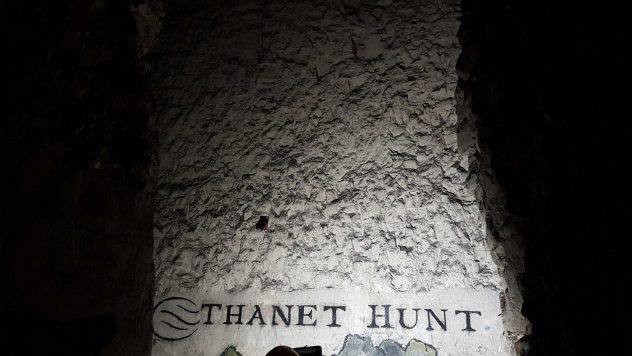
In the spring of 1958, James Geary Gardner, the proprietor of Chislehurst Caves, became interested in the site and sought to locate an entrance into the Caves. A concrete paving slab in the old vicarage gardens was lifted, exposing Forster’s old entrance steps. The entrance was cleared of rubble and debris and a set of steps was constructed. Two wooden huts were erected over the entrance for ticket sales.
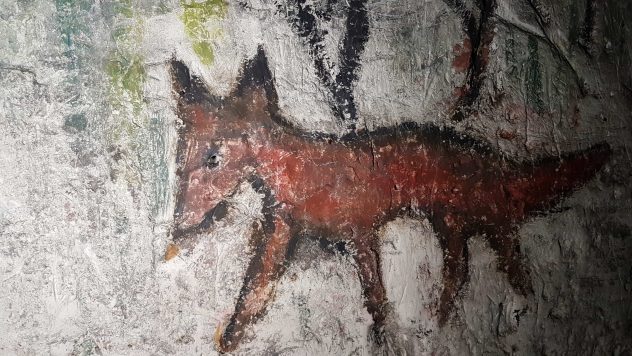
The Caves once again opened to the public and remained so under several owners until the site was compulsory purchased by Thanet District Council as part of the scheme to widen Northdown Road.
In 2004, due to poor maintenance of the visitor infrastructure, the Caves were closed after a prohibition notice was issued by the Health & Safety Executive.
Thanet District Council commissioned a structural survey in 2005 and a detailed report was produced on the condition of the caves. The report also gave recommendations for the work required in order to re-open to the public.
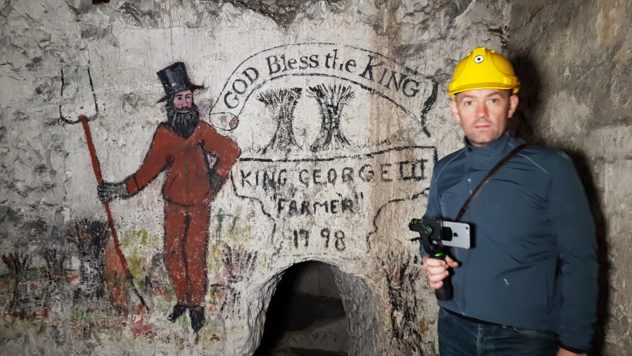
In 2010 TDC filed a planning application for housing on the site. Faced with strong public opposition this proposal was delayed, allowing local people to pursue options for saving this historical site and the caves for public benefit.
In January 2011 the local community formed The Friends of Margate Caves (FOMC) as a formally constituted community group, recognised by the council, to develop, pursue and implement a plan to reopen the Caves.
FOMC commissioned an Options Appraisal for the site and worked with a consultant to develop a first stage business plan. One of the recommendations was that the governance structure needed to be more robust to manage such a project and deliver the public benefit objectives of the group. Subsequently in November 2013 The Margate Caves Community Education Trust (TMCCET) was formed and registered with the Charity Commission.
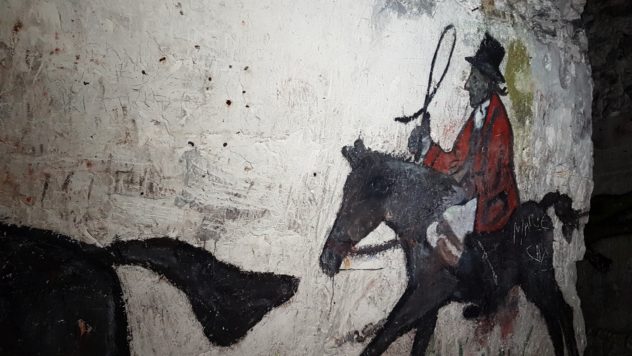
By 2016, TMCCET had prepared full plans to make the Caves safe again, build a new visitor centre with community rooms, and landscape the site over the caves – and raised over half a million pounds.
In November 2016, an application was made to the Heritage Lottery Fund (HLF) for the money to start the work. In March 2017, HLF confirmed their grant award giving TMCCET over £1.5million to build a visitor and community centre and reopen the Caves.
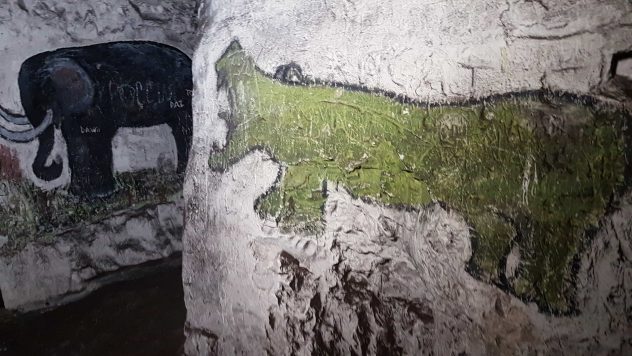
Work has now started and the Caves are due to be reopened in 2019.
History supplied by The Margate Caves Community Education Trust

